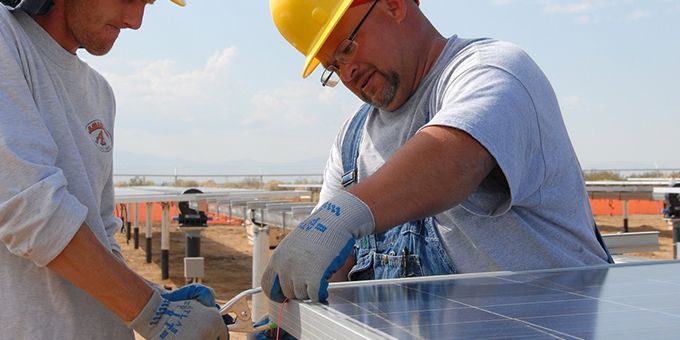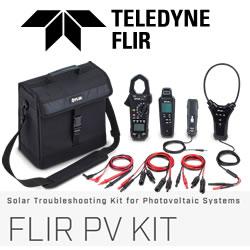Renewable energy is rapidly emerging as an attractive choice for businesses and households alike. Any installation project poses potential safety risks. The goal is to minimize them to keep employees well-protected.
 Reducing Renewable Energy Installation Risks
Reducing Renewable Energy Installation Risks

Emily Folk | Conservation Folks
There is no single strategy for cutting all the hazards connected to renewable energy installation, but these tips will get professionals off to a good start.
Assess the Worksite and Equipment Needed
Risk reduction for renewable energy projects starts with examining the worksite and what equipment installers need to avoid accidents. For example, project managers must determine the height of ladders or scaffolding required and the methods used for lifting and carrying solar equipment. They also need to look at ways to minimize trip-and-fall injuries.
People working at heights — such as while on rooftops — require fall protection gear for optimal safety. There are also special equipment needs associated with solar equipment. It gets energy from the sun, as well as the utility company. That means turning off the main breaker is not sufficient. Using an opaque sheet to cover the solar panel can block risks caused by energy production from the sun.
Even if the client insists they are on a tight schedule, work should never begin before a thorough assessment of the location and the equipment needed to tackle the job occurs. When setting customer expectations, always factor this assessment period into the timeframe.
Become Familiar With the Risks and Respective Mitigation Strategies
A successful renewable energy installation project requires those overseeing it to understand the risks and how to reduce them. For example, risk avoidance may mean modifying the scope or speed of the undertaking so workers only proceed within the boundaries of their limitations.
However, risk transfer is another option. It means that another party — perhaps a contractor or insurance company — bears the majority of the threat potential because they have more resources to face it if necessary.
Every project has a set of possible dangers linked to it, and it's impossible to eliminate all of them. A better approach is to use a risk matrix to rank them in order of severity, and determine what's within the power of a company or party to steer clear of the most catastrophic problems.
Invest in Adequate Employee Training
Employee education helps keep people safer, but it also comes with advantages you may not expect. For example, a well-trained heavy equipment operator can use 10-12% less fuel each day than an untrained one. The difference lies in the amount of idle time, which can quickly add up and cause waste.
There are specific training periods for renewable energy installers, too. For example, a wind energy technician usually completes a two-year program at a technical school. They then get on-the-job training, which typically lasts a year. Education should not be an isolated period in a person's life, but something that happens for the duration of their careers.
Employers should update their educational programs regularly to accommodate for the presence of newly identified risks. It's also ideal for workers to stay abreast of new offerings that could help them prioritize safety. For example, apps or wearable tech could be advantageous to investigate and perhaps bring up at workplace improvement meetings.
Work With Reputable Suppliers
Safety also factors into the materials used for a renewable energy installation. Poor-quality products could lead to issues while putting the equipment in place, which could delay the project and add unexpected costs. Moreover, it often has a shorter lifespan than top-quality merchandise, and there is a higher likelihood of a customer experiencing problems with it.
PV Evolution Labs (PVEL) releases an annual scorecard of the best-performing solar equipment based on independent testing. It found that 20% of bills of material (BOM) failed at least one test. Manufacturers are understandably eager to get their offerings in the marketplace, but that push should not occur at the expense of safety.
PVEL's tests only encompassed photovoltaic modules. Companies hired to install renewable energy equipment of any type should perform careful research to find out whether suppliers have histories of producing safe, reliable equipment, or conversely, goods that could introduce preventable problems.
Receive and Give Feedback
Controlling the risks associated with renewable energy projects also requires the ongoing exchange of feedback. Such dialogue can make potential unaddressed dangers more apparent.
For example, an employee may repeatedly bring up an unsafe practice at work or say they need more training. Employers should take those concerns into account and do what they can to show that safety is a top-of-mind concern.
An Ongoing Process
Keeping renewable energy installations safe happens continually. Besides considering these tips, people in the sector must remain adaptable and know they may need to change their approaches to enhance safety.
The content & opinions in this article are the author’s and do not necessarily represent the views of AltEnergyMag
Comments (0)
This post does not have any comments. Be the first to leave a comment below.
Featured Product

